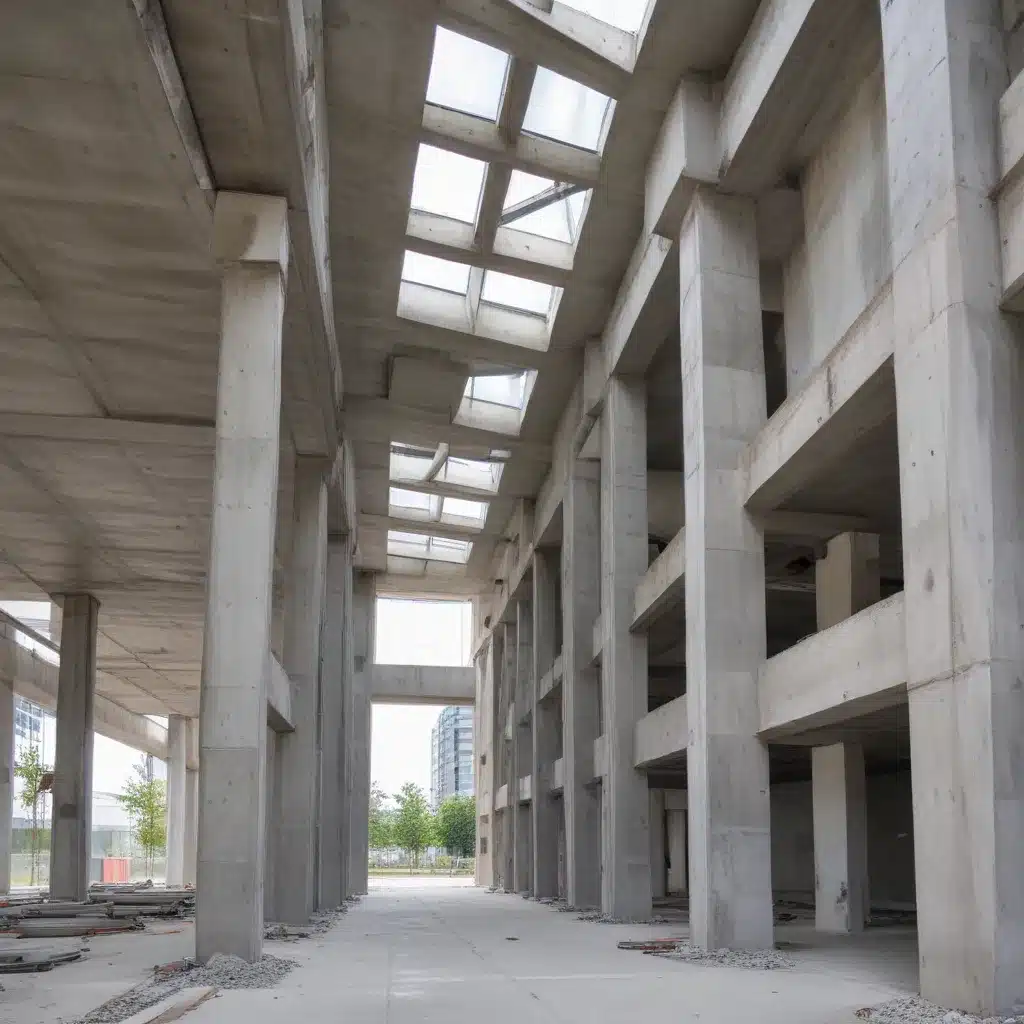
Introduction to Reinforced Concrete Building Optimization
Constructing energy-efficient buildings is a critical challenge in the quest for sustainable development and environmental preservation. Reinforced concrete structures, a prevalent choice in modern construction, offer numerous benefits in terms of durability, structural integrity, and design flexibility. However, achieving optimal energy efficiency in these buildings remains a complex task, requiring a comprehensive approach that considers multiple factors, including material properties, structural design, and thermal performance.
One promising solution to this challenge lies in the application of evolutionary algorithms, a powerful optimization technique inspired by the principles of natural selection and genetics. These algorithms have the ability to explore a vast solution space, identifying optimal designs that balance energy efficiency, structural performance, and cost-effectiveness.
The Role of Cementitious Sandwich Panels in Energy-Efficient Buildings
Cementitious sandwich panels (CSPs) have emerged as a popular choice for constructing energy-efficient reinforced concrete buildings. These panels are composed of two outer cementitious face sheets, typically made of concrete or fiber-reinforced cement, with a lightweight insulating core material in between. This sandwich-like structure provides several advantages, including:
- Improved Thermal Performance: The insulating core material, such as foam or mineral wool, significantly enhances the thermal resistance of the building envelope, reducing energy consumption for heating and cooling.
- Structural Integrity: The composite action between the face sheets and the core material results in a strong and stiff panel system, capable of withstanding various loading conditions.
- Lightweight Construction: The lightweight nature of CSPs can lead to substantial savings in the overall structural load and foundation requirements, making them a cost-effective solution.
Limitations of Conventional Optimization Approaches
Traditional design approaches for CSPs have often overlooked the complex three-dimensional truss-like behavior of these panels, leading to suboptimal designs and underestimating their structural and thermal performance. This oversight can result in uneconomical designs and missed opportunities for further improving energy efficiency.
To address these limitations, a more comprehensive optimization approach is required, one that considers the intricate interplay between structural, thermal, and economic factors. This is where evolutionary algorithms, such as genetic algorithms (GAs), can play a crucial role.
Genetic Algorithm Optimization of Cementitious Sandwich Panels
Genetic algorithms are a class of evolutionary algorithms that mimic the natural process of selection, reproduction, and mutation to optimize complex systems. In the context of CSP design, GAs can be employed to identify the optimal configuration of design parameters, including:
- Shear Connector Geometry and Distribution: The shape, size, and placement of the shear connectors that transfer loads between the face sheets and the core material can significantly impact the structural performance and composite action of the CSP.
- Face Sheet Thickness: The thickness of the outer cementitious face sheets influences the overall strength, stiffness, and thermal resistance of the panel.
- Steel Reinforcement: The size, geometry, and placement of the steel reinforcements within the face sheets can further enhance the structural capacity of the CSP.
By using genetic algorithms to explore this multidimensional design space, researchers can develop optimized CSP designs that achieve the following goals:
- Maximized Structural Performance: Optimizing the shear connectors and reinforcement to enhance the composite action and load-bearing capacity of the CSP.
- Enhanced Thermal Resistance: Improving the insulating properties of the panel through the selection of optimal core materials and face sheet thicknesses.
- Cost Optimization: Identifying the most cost-effective combination of materials and design parameters to minimize the overall construction costs.
Verification and Validation of Optimized Designs
To ensure the reliability and effectiveness of the optimized CSP designs, a rigorous verification and validation process is crucial. This typically involves:
- Numerical Modeling and Simulation: Developing advanced finite element analysis (FEA) models to accurately simulate the structural and thermal behavior of the optimized CSP designs under various loading conditions.
- Experimental Testing: Conducting full-scale experimental testing on the optimized CSP prototypes to validate the numerical predictions and ensure the designs meet or exceed the desired performance criteria.
- Comparative Analysis: Comparing the performance of the optimized CSP designs with existing commercially available systems to quantify the improvements in structural, thermal, and economic aspects.
Implementing Optimized CSP Designs in Energy-Efficient Buildings
The successful implementation of optimized CSP designs in energy-efficient reinforced concrete buildings can lead to significant benefits, including:
- Enhanced Thermal Efficiency: Improved insulating properties of the CSP can result in substantial reductions in heating and cooling energy demands, contributing to overall building energy efficiency.
- Reduced Construction Costs: The cost-optimized CSP designs can lead to material and labor savings, making the construction of energy-efficient buildings more economically viable.
- Improved Structural Resilience: The enhanced structural performance of the optimized CSP systems can enhance the overall structural integrity and safety of the building, providing added benefits in seismic-prone regions.
Conclusion and Future Directions
The optimization of energy efficiency in reinforced concrete buildings using evolutionary algorithms, particularly in the context of cementitious sandwich panels, represents a promising approach to address the challenges of sustainable construction. By leveraging the power of genetic algorithms to explore the multifaceted design space, researchers and engineers can develop innovative CSP solutions that balance structural, thermal, and economic considerations.
As the demand for energy-efficient buildings continues to grow, the continued refinement and application of these optimization techniques will be crucial in driving the adoption of more sustainable construction practices. Future research directions may include the integration of additional performance criteria, such as life-cycle assessment and environmental impact, as well as the exploration of other evolutionary algorithms and hybrid optimization methods to further enhance the optimization process.
By embracing the synergistic potential of advanced optimization techniques and the unique capabilities of cementitious sandwich panels, the construction industry can make significant strides towards achieving the goal of energy-efficient, cost-effective, and structurally resilient reinforced concrete buildings.


